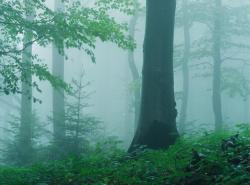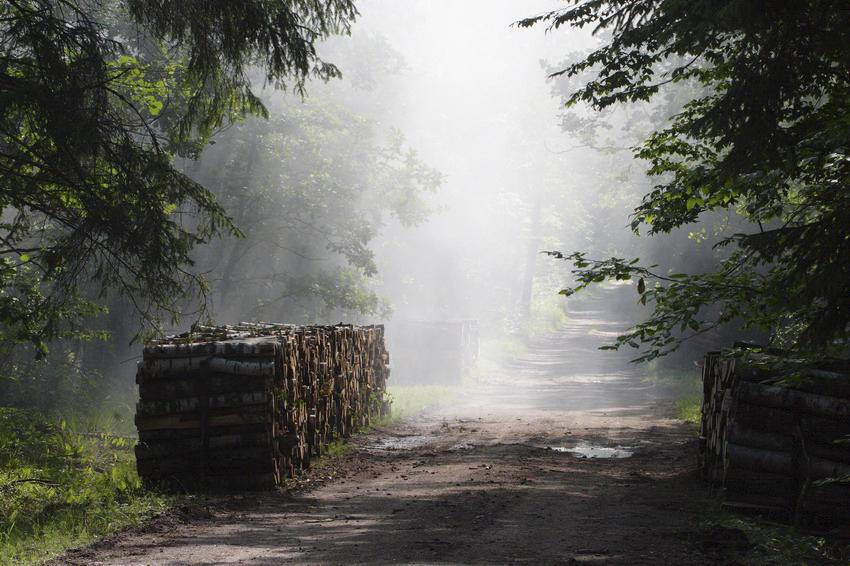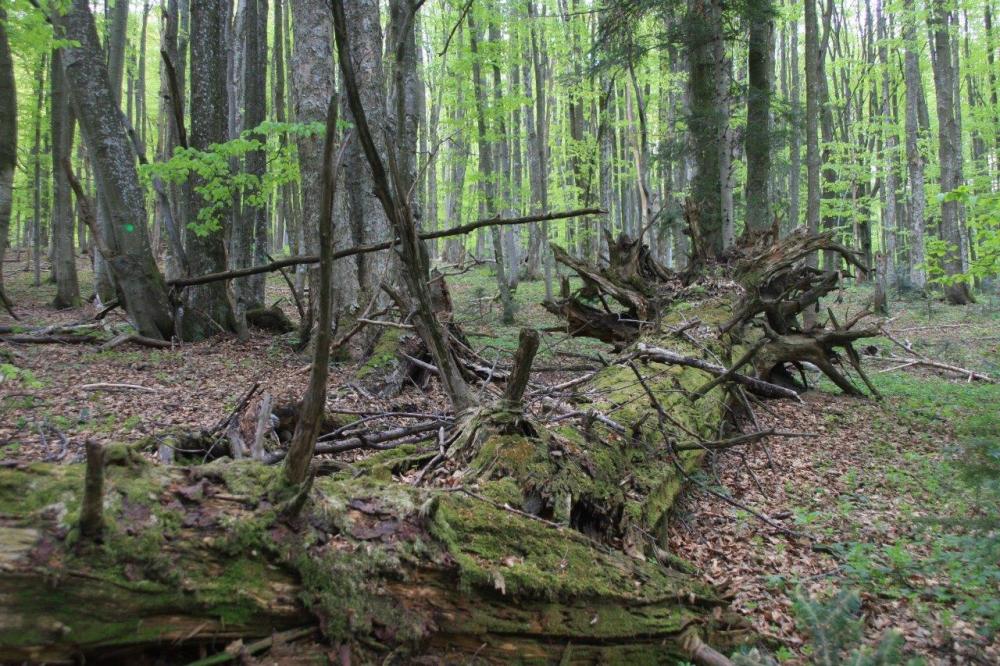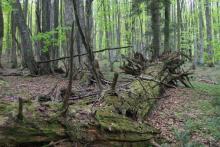 Asset Publisher
Asset Publisher
The State Forests National Forest Holding
The State Forests National Forest Holding is the largest organisation in the European Union managing forests, which belong to the State Treasury and celebrating its 90 anniversary this year.
Presently, we manage the area of one third of Poland's territory. Not long after the end of the Second World War, there was only 21 % of the area. Every year we plant 500 million of new trees, as we want Polish forests grow all the time.
Every year Polish foresters plant 500 million of trees.
85 % of nature reserves in Poland are located within the State Forests. 40 % of the forests managed by General Directorate of the State Forests are protected within the framework of European network Natura 2000. We fight against many threats: natural disasters, plaques of insects, trees' diseases, fires, pollutions, as well as poaching and vandalism.
We take care the forestry supplying the market with timber, as ecological and universal material, to be carried on in accordance with rules of balanced development (photography P.Fabjański).
One of our major tasks is making forests accessible to the society. We invite you to take advantage of these beautifully located within the forest wilderness holiday resorts, forester's lodges or guest rooms. That is for you, we create thousand kilometres of hiking trails, cycling paths or camping sites. All the above mentioned, you can find in service www.czaswlas.pl.
We also take care the forestry supplying the market with timber, as ecological and universal material, to be carried on in accordance with rules of balanced development. We obtain over 30 million of cubic meters of wood annually, twice as much as at the beginning of the nineties of the XX century.
Despite of this, the average of wood abundance per hectare of our forests is one fourth bigger than 20 years ago and 40% bigger than the average of European Union currently amounts.
In Poland in sectors connected with the forestry, there work about 375 thousand of people. It means that each 40 working Pole works in the forest.
In Poland in sectors connected with the forestry, there work about 375 thousand of people. It means that each 40 working Pole works in the forest. The sector of wood processing works out approximately 8 % of our GDP (Gross Domestic Product). Among others, thanks to the timber from the State Forests Poland is the 10 largest producer of furniture in the world, and the 4 largest furniture exporter.
The State Forests employ 25 thousand people. That way we are the 9 biggest employer in Poland. Among the largest companies in our country it takes 22 place in respect of its incomes and 11 place in respect of its profits. The value of assets, we manage, reaches 300 million zl. If we add social values, it will be worth one billion zlotych. We do not use money from the budget, but we earn money on our own to support the business. In spite of the financial crisis, since 2002, we continuously note down profits. Moreover, we pay taxes amounting 1,3 billion zl annually.
87 % of Poles think, the foresters are competent. We willingly share our knowledge of Polish forests, of their history and of nature values with the others. We publish books, periodicals, brochures; we also administer the website www.lasy.gov.pl . For children, the youth and teachers, we prepared internet service "E-lynx' Lynx Forest" (www.erys.pl). Our staff has supported schools in field of nature education for years. We also organise many actions to let people broaden their knowledge about forest, nature and ecology.
 Asset Publisher
Asset Publisher
100 rezerwatów na 100-lecie Lasów Państwowych
100 rezerwatów na 100-lecie Lasów Państwowych
Z okazji setnej rocznicy istnienia Lasy Państwowe postanowiły uczcić ten historyczny moment poprzez stworzenie 100 nowych rezerwatów przyrodniczych. Ta inicjatywa ma na celu nie tylko upamiętnienie bogatej historii organizacji, ale przede wszystkim zapewnienie dalszej ochrony przyrody oraz zachowania różnorodności biologicznej naszego kraju. Dzięki temu miłośnicy lasu będą mieli okazję jeszcze bardziej docenić piękno i wartość naszych lasów oraz skorzystać z dobrodziejstw, jakie niesie kontakt z naturą.
W 1924 r., wraz z odradzaniem się polskiej państwowości, powstała instytucja Lasów Państwowych. Od początku istnienia jej misją jest zrównoważone zarządzanie lasami i powiększanie zasobów leśnych. Mimo wojny światowej, zmiany granic państwa, gospodarki planowej w czasach PRL, ta misja jest realizowana. Miedzy Odrą a Bugiem rośnie lesistość i zasoby drzewne.
Dziś, gdy nasz kraj jest niemal w 1/3 pokryty lasami, oczekiwania Polek i Polaków, którzy obserwują zmiany klimatu, koncentrują się na zwiększeniu ochrony lasów. W odpowiedzi na te oczekiwania leśnicy chcą zaproponować powołanie stu nowych rezerwatów przyrody – mówi Witold Koss, dyrektor generalny Lasów Państwowych.
Prace już się toczą. Do dzisiaj z nadleśnictw spłynęło ponad 200 propozycji nowych rezerwatów. Każda z nich jest teraz analizowana, tak by wybrać najcenniejsze i najbardziej różnorodne obszary. Oraz takie, w przypadku których istnieją najbardziej kompletne dane przyrodnicze. Po to, by zwiększyć szanse na szybkie utworzenie rezerwatów.
Leśnicy chcą działać transparentnie. Wybrane propozycje zostaną przedstawione Polkom i Polakom w internecie. Tak by każdy po zapoznaniu się z opisem, zdjęciami i mapą mógł przedstawić swoje uwagi.
Chcemy by nasza propozycja 100 rezerwatów odzwierciedlała różnorodność i bogactwo przyrodnicze lasów – deklaruje Jerzy Fijas, zastępca dyrektora generalnego Lasów Państwowych ds. zrównoważonej gospodarki leśnej, który jest koordynatorem przedsięwzięcia. I dodaje: W tych przypadkach, gdy zaistnieje kilka propozycji nazwy, chcemy dać szansę zagłosowania on-line na jedną z nich.
Jak będzie wyglądał kalendarz akcji ogłoszonej w związku z Międzynarodowym Dniem Lasów? W ciągu najbliższych dwóch miesięcy leśnicy dokonają wyboru setki propozycji nowych rezerwatów i ogłoszą je w internecie. Kolejny etap to kompletowanie dokumentacji, również w oparciu o uwagi strony społecznej: samorządów, przyrodników i mieszkańców okolic nowych rezerwatów. W drugiej połowie roku gotowe wnioski zostaną skierowane do Regionalnych Dyrekcji Ochrony Środowiska, które są władne by ustanowić rezerwaty.
100 rezerwatów na 100-lecie Lasów Państwowych to nie tylko jednorazowa akcja jubileuszowa. Leśnicy zgłaszają i będą zgłaszać kolejne rezerwaty. Już dzisiaj 86% z ponad 1500 polskich rezerwatów znajduje się na gruntach Lasów Państwowych. Zajmują powierzchnię równą kilku parkom narodowym.
Chcemy, by tych sto nowych rezerwatów przyrody było naszym urodzinowym prezentem dla Polek i Polaków. Liczę, że pierwsze rezerwaty z okazji 100-lecia powstaną jeszcze w tym roku. To będzie trwałe i najlepsze upamiętnienie naszego jubileuszu, jakie można sobie wyobrazić – podsumowuje dyrektor Koss.
*Teren doliny Roztoki i planowany rezerwat "Las bukowy pod Obnogą" (zdjęcie Edward Marszałek).


 fot. Paweł Fabijański
fot. Paweł Fabijański
 fot. Paweł Fabijański
fot. Paweł Fabijański
 fot. Paweł Fabijański
fot. Paweł Fabijański





